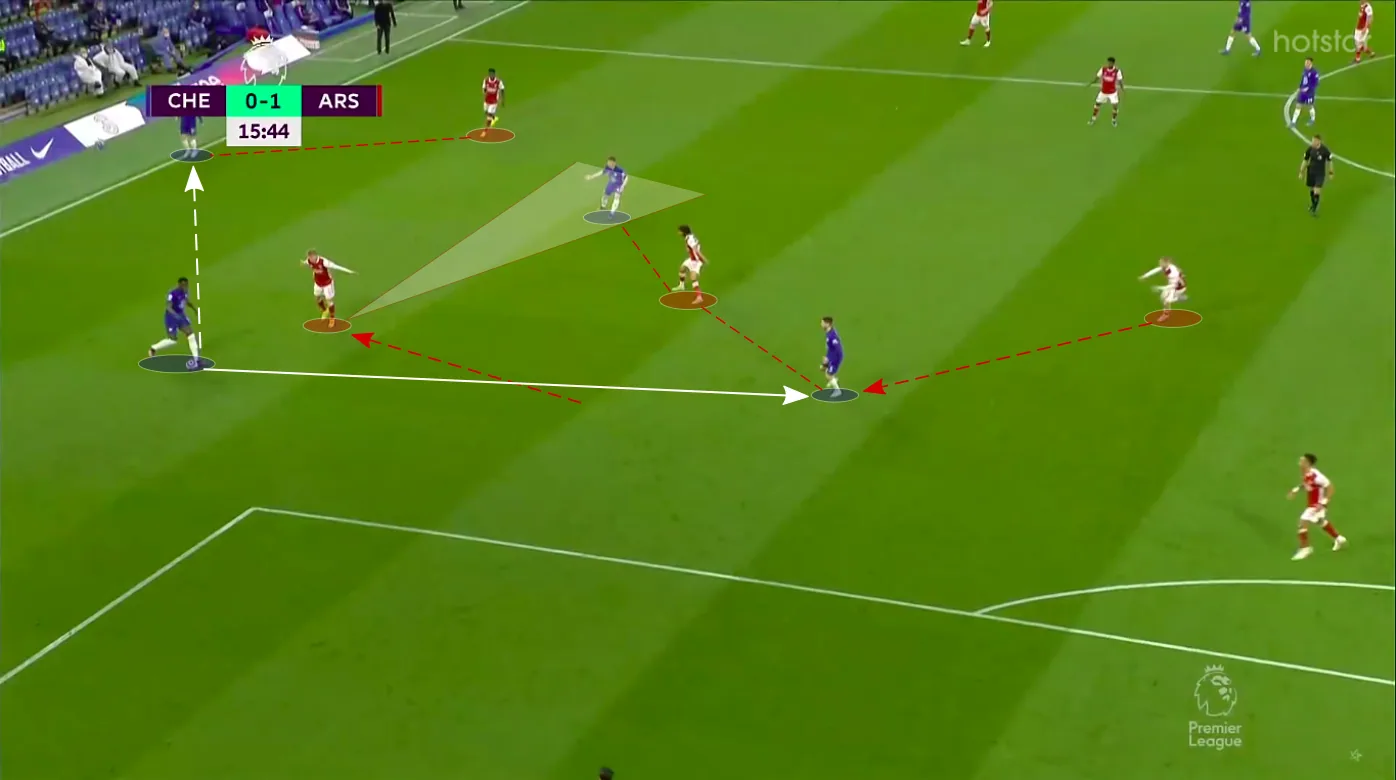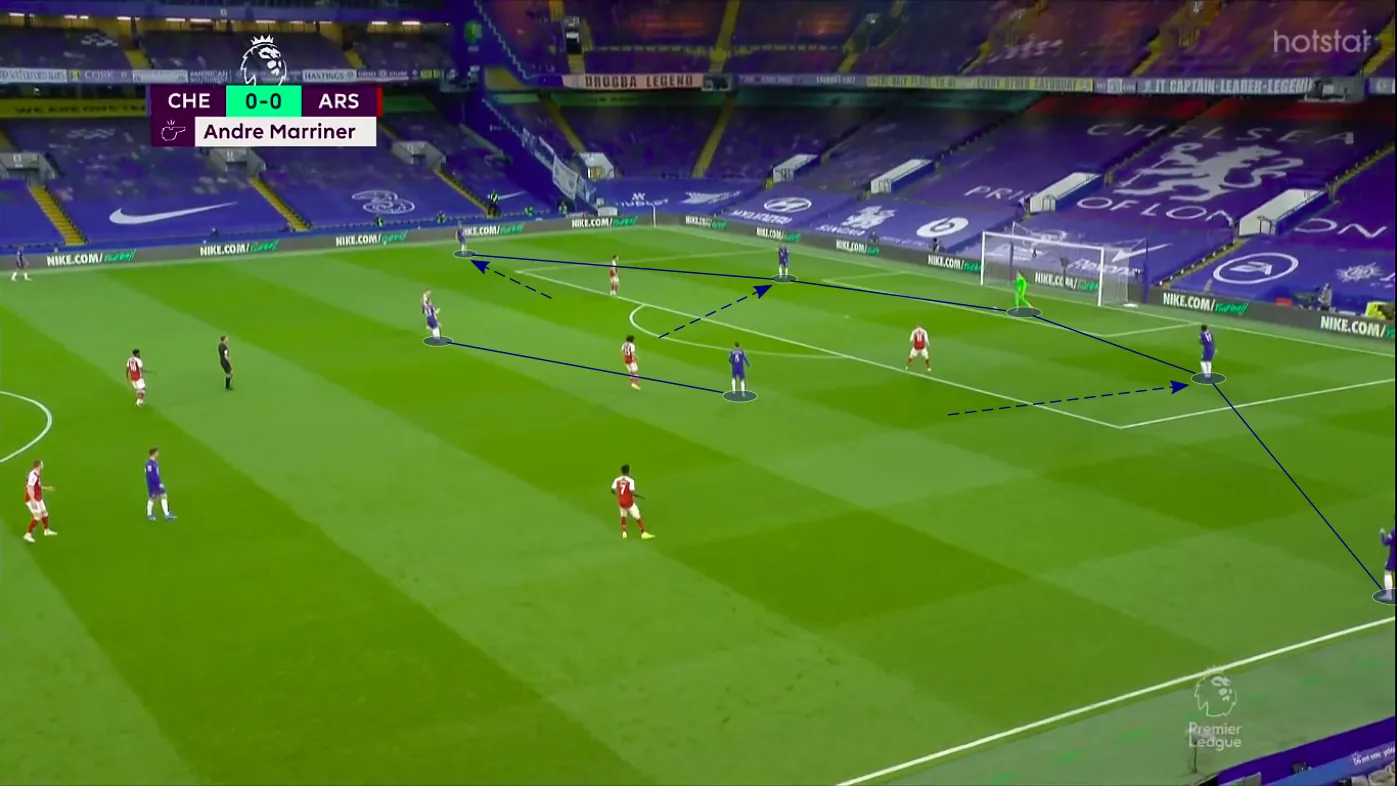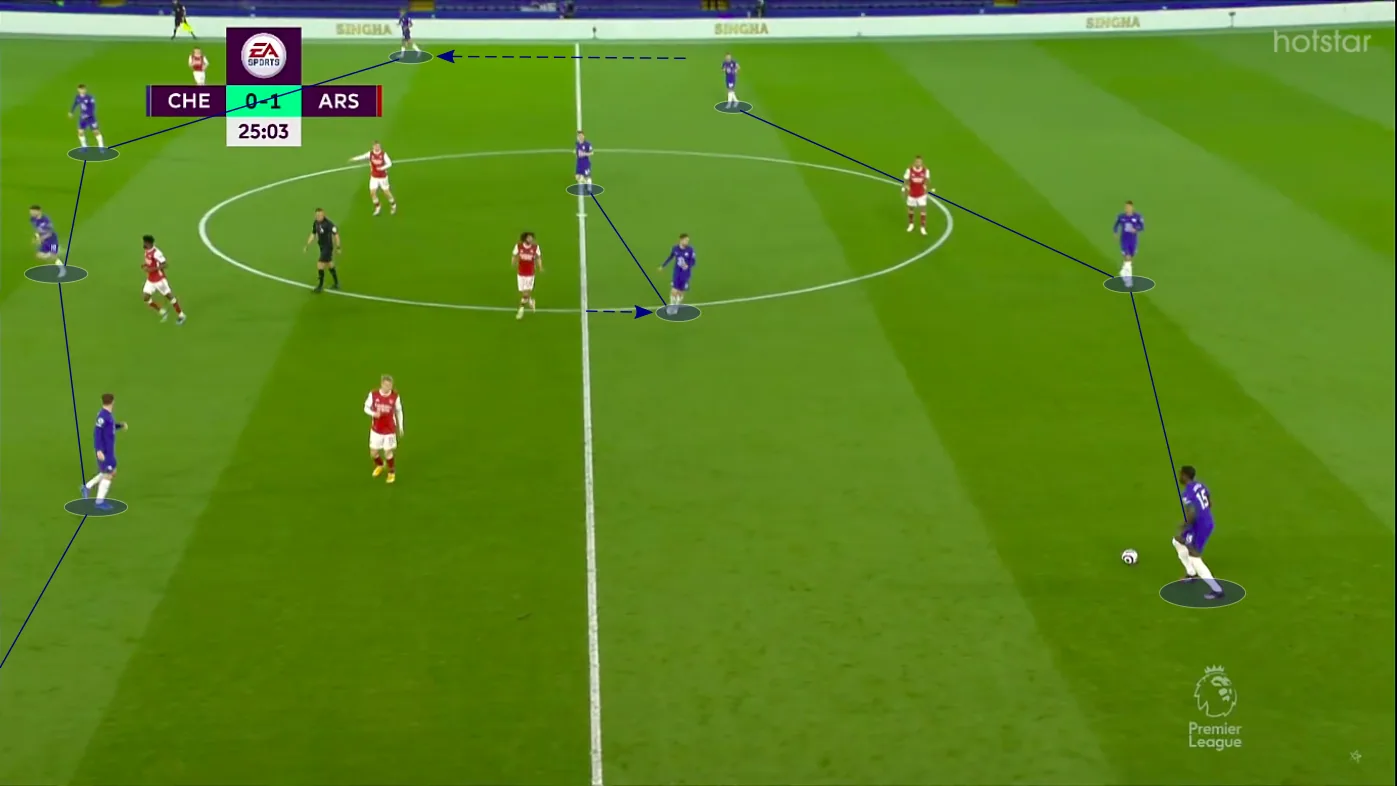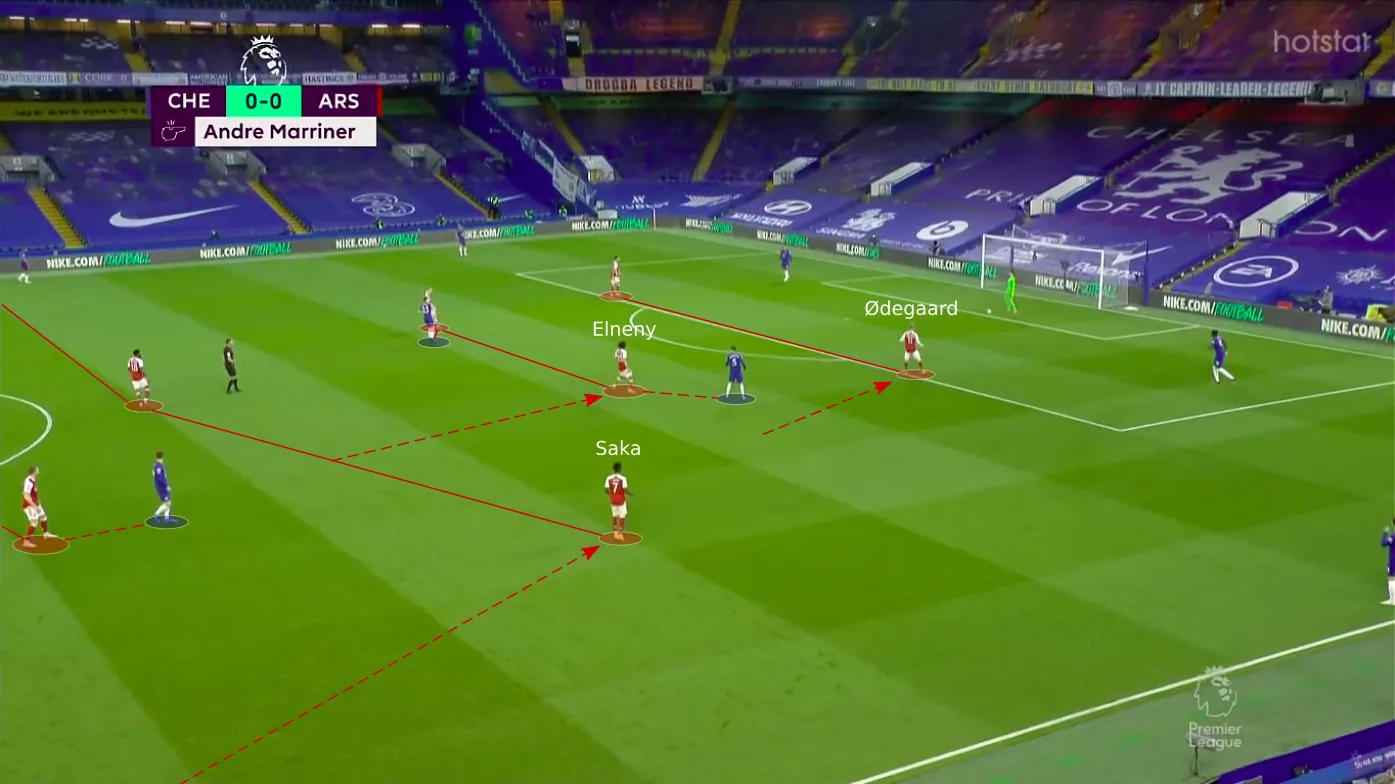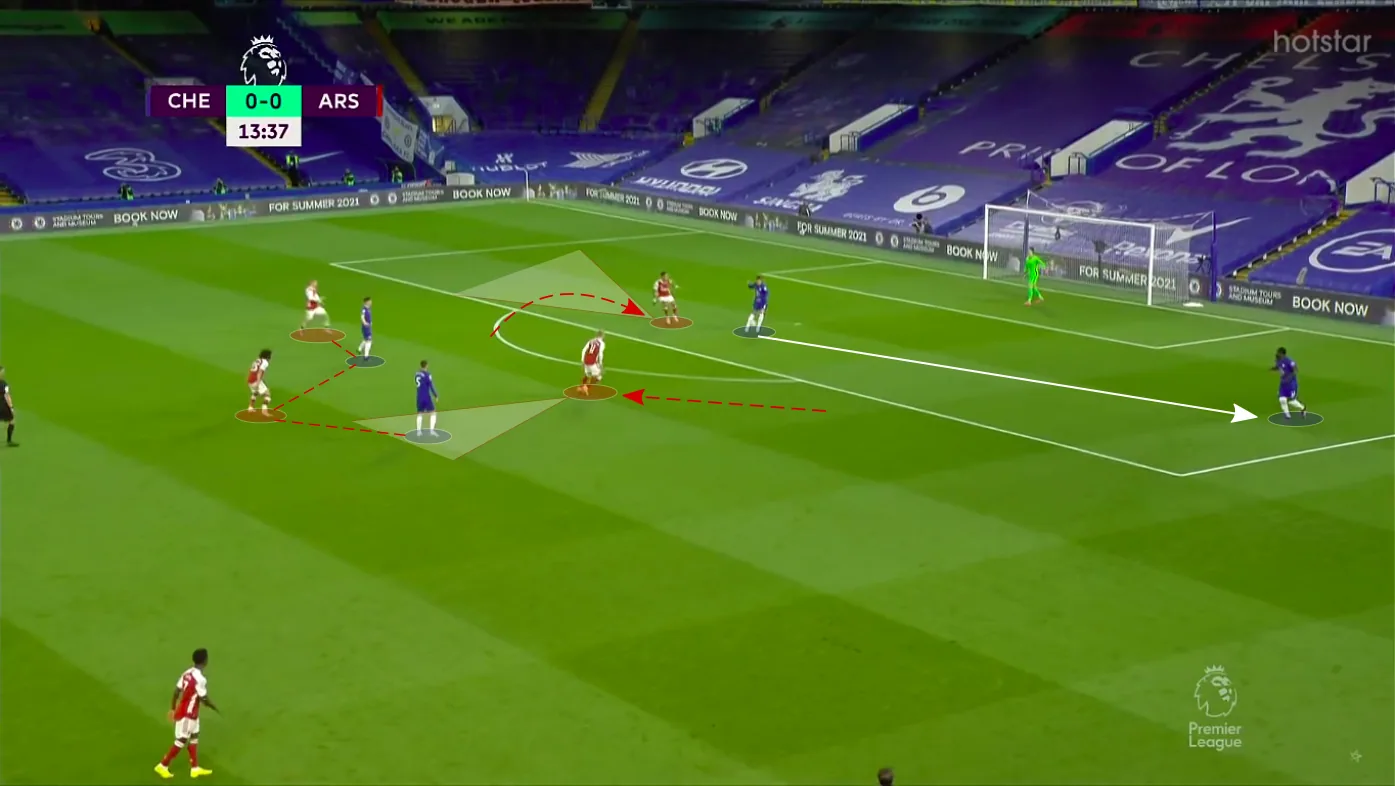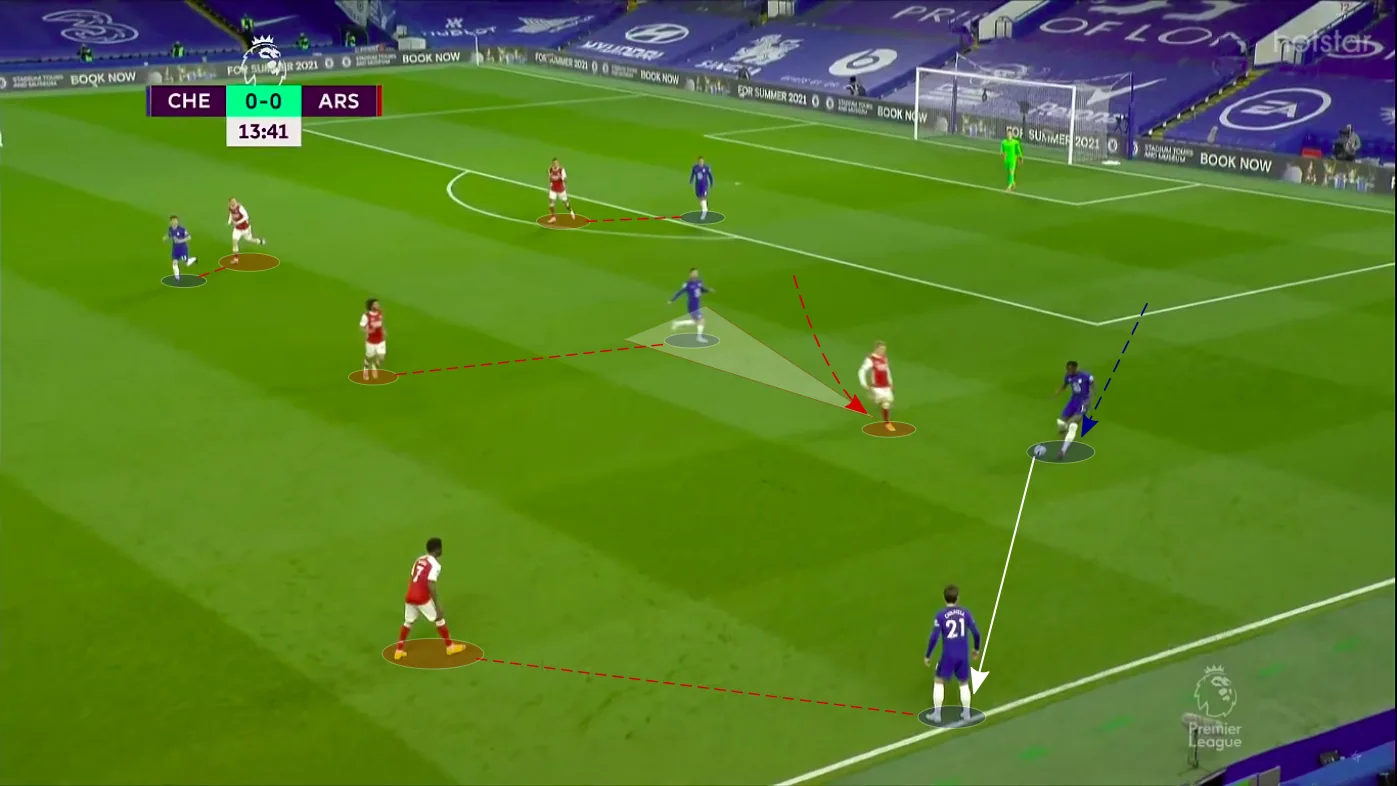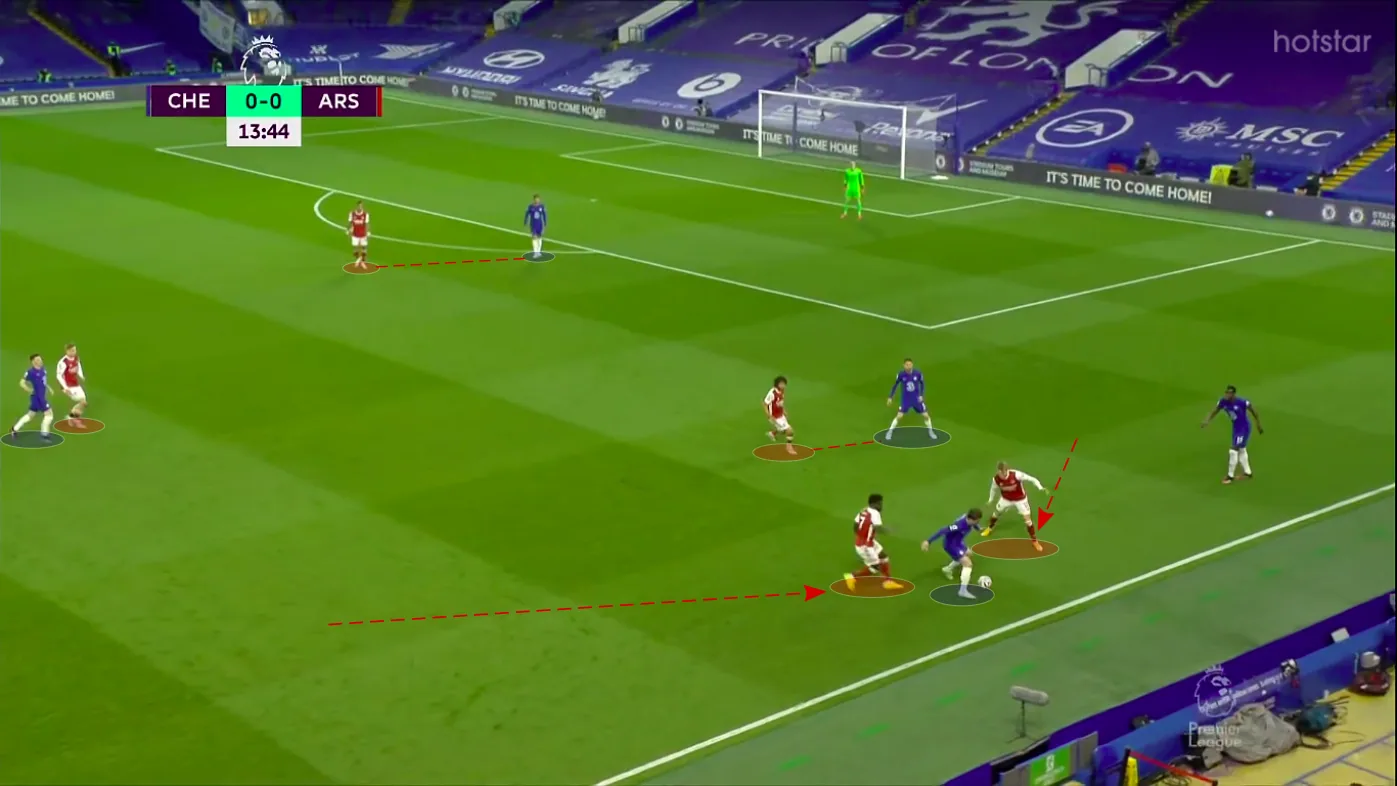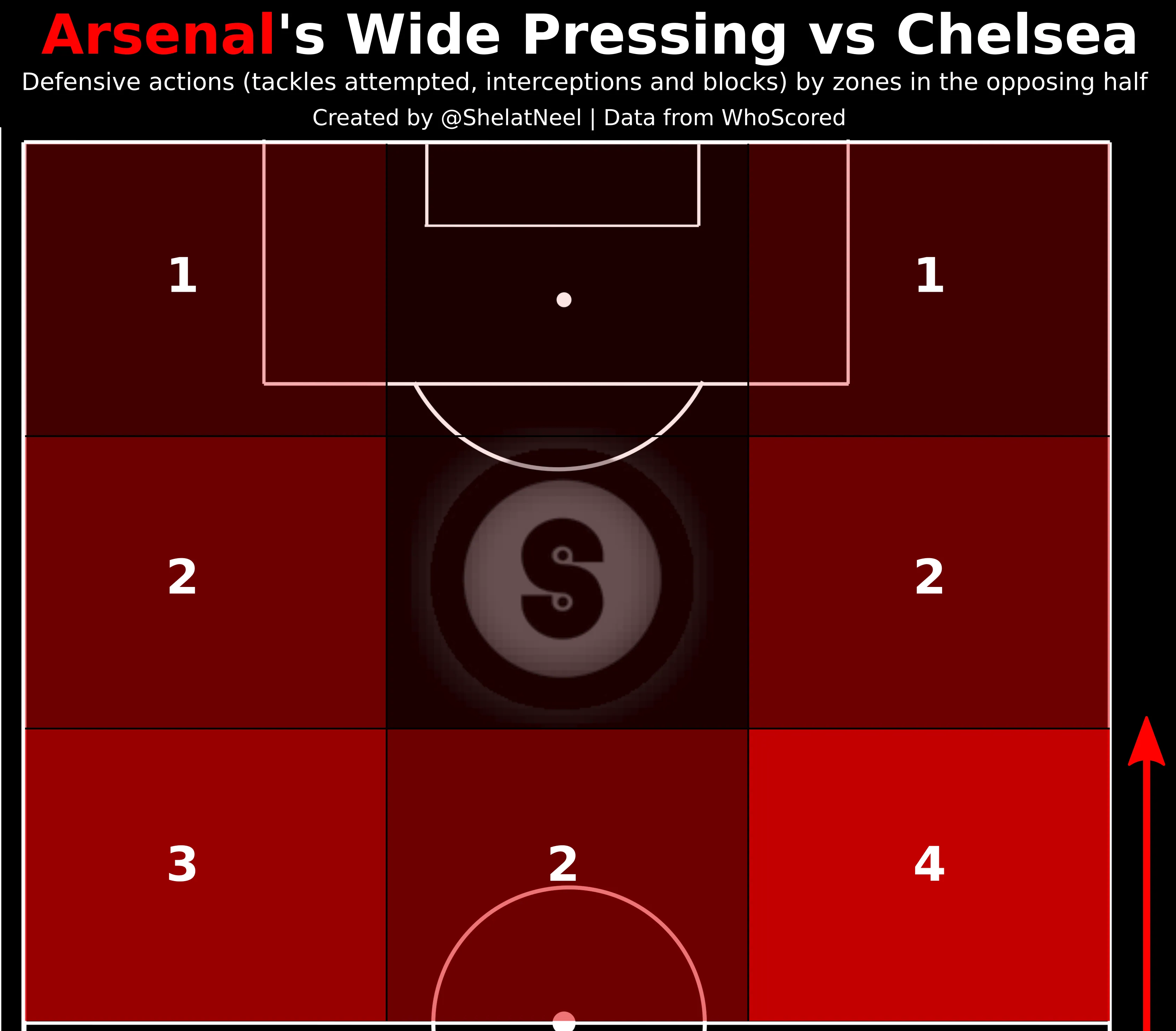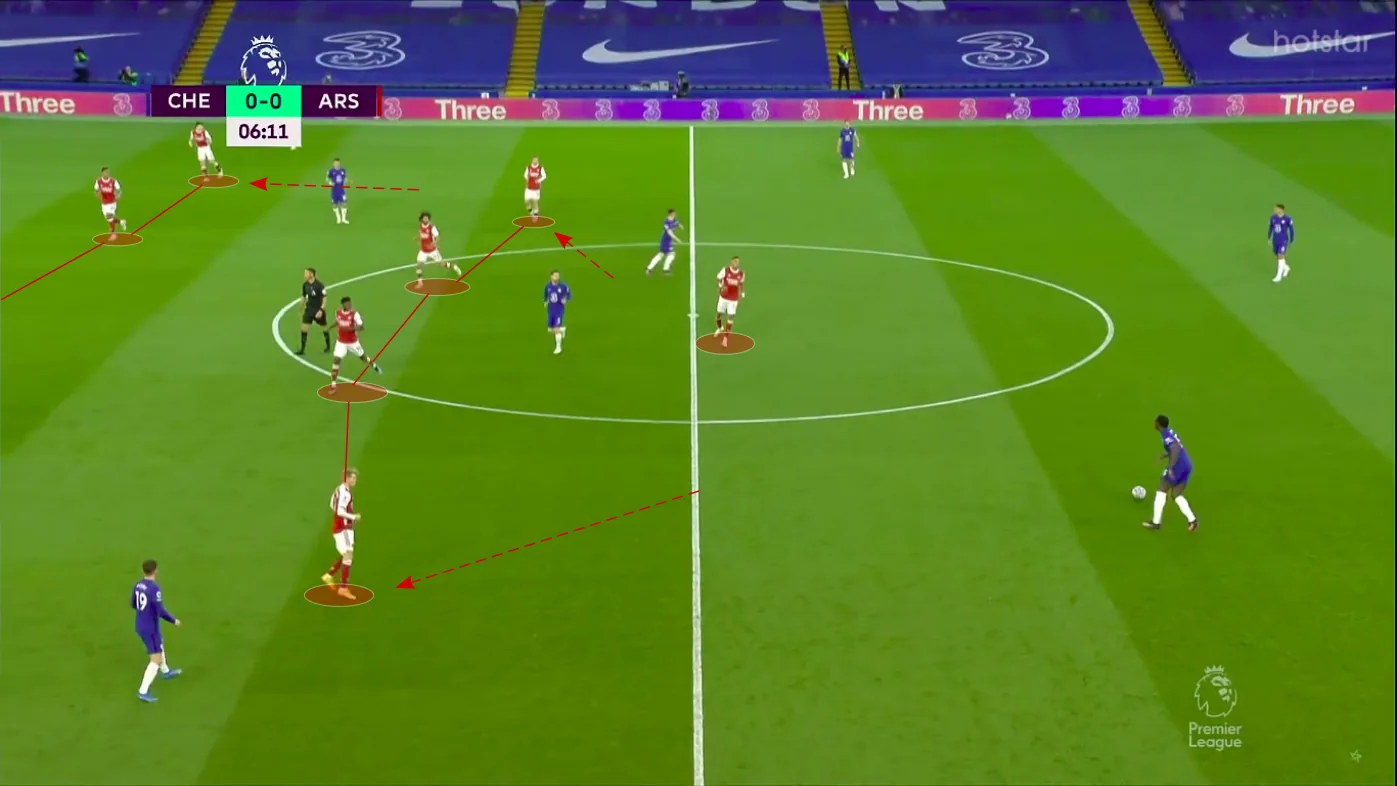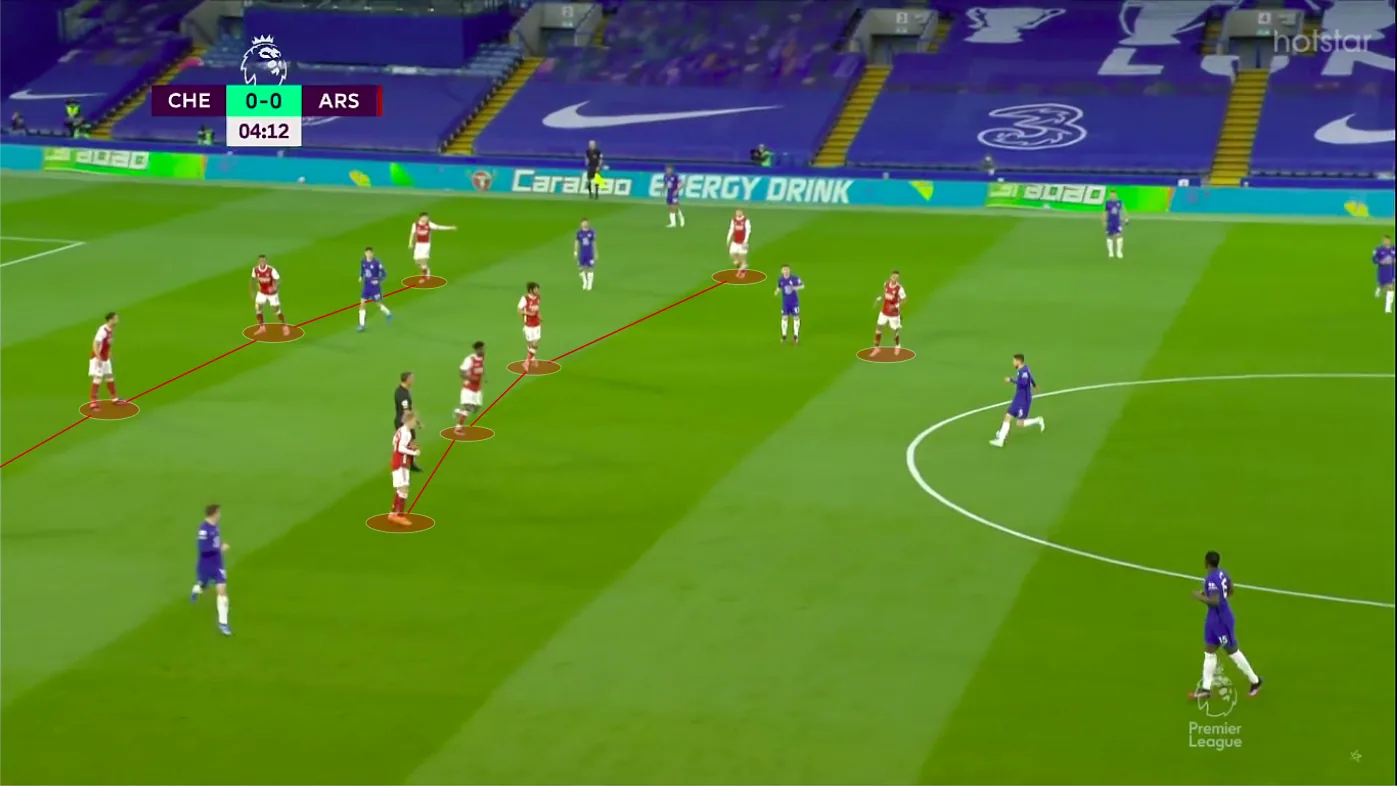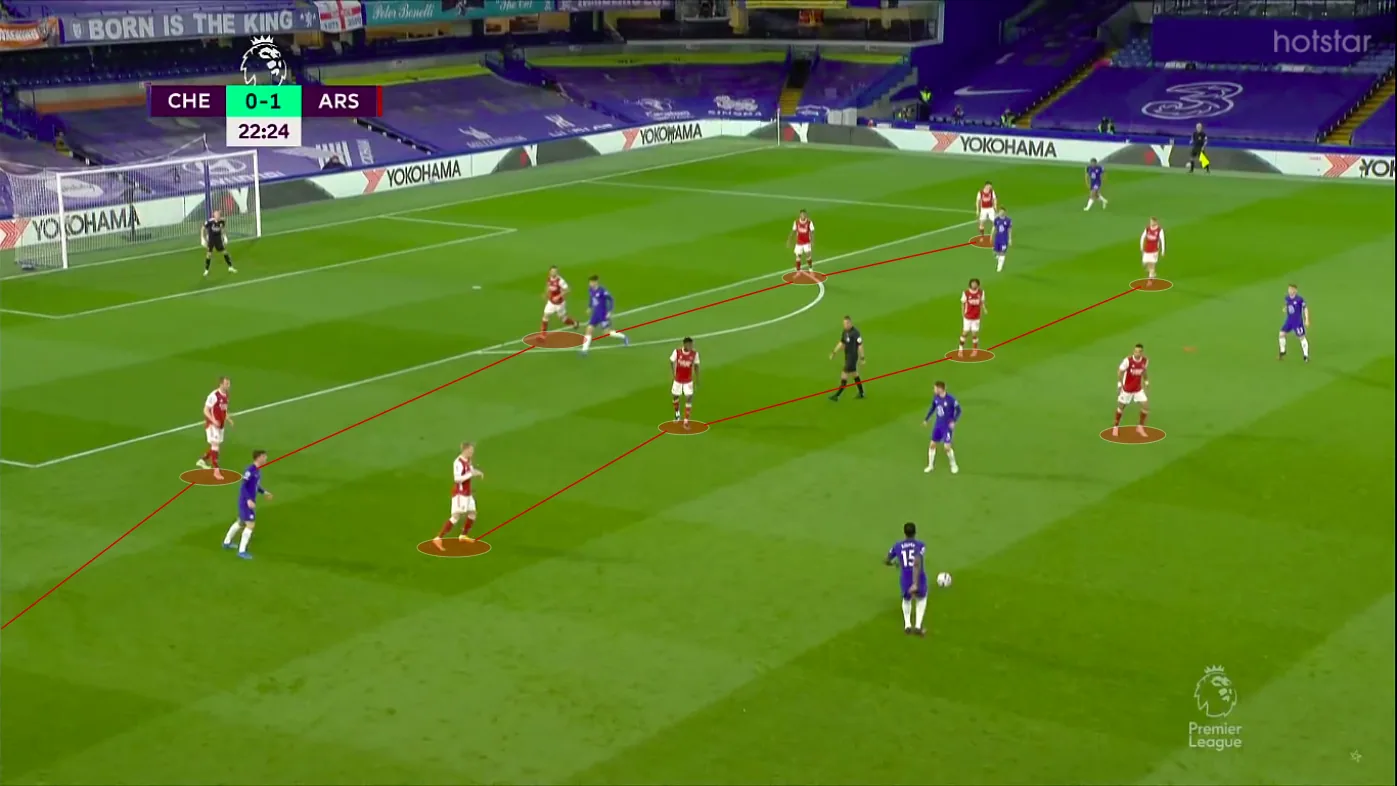Chelsea’s final league match before the FA Cup final against Leicester City was an important London derby, as they hosted Arsenal at Stamford Bridge.
The Blues were six points clear of West Ham in fourth place, but a win would still be quite handy to help effectively seal their Champions League ambitions for next season.
Their visitors also needed the three points, as their Europa League elimination meant that their best shot at continental football for next season was to finish in 7th to gain a spot in the inaugural Conference League, which was quite a daunting task considering their league position.
As most might have predicted, Chelsea utterly dominated the match. However, Arsenal managed to steal a goal early on and defended as if their lives depended on it to come away with a 1-0 success.
In this analysis, we will take a closer look at the tactical changes that Mikel Arteta made to help the Gunners to this crucial victory as he switched his system up to line up in a 3-4-2-1 that mirrored Chelsea’s shape.
Chelsea in possession
Before we do that, let us first quickly touch on Chelsea’s shape with the ball. Within their own box, the Blues’ centre-backs split to either side of Kepa Arrizabalaga.
Including him, they had a 5-2 in the build-up, as César Azpilicueta moved to a right-back area, Thiago Silva was to the keeper’s right and Kurt Zouma to his left, and Ben Chilwell made up a sort of back-four.
Further forward, they transitioned into their well-known 3-2-5 with the wing-backs pushing up and Jorginho occupying a horizontal channel slightly lower than Billy Gilmour’s to facilitate smooth ball progression.
Arsenal’s pressing
Now, let us focus on Arsenal. First up, we will take a closer look at their pressing mechanisms.
High up the pitch, the Gunners’ defensive shape was a sort of a 3-3-2-2, as Martin Ødegaard pushed up alongside Pierre-Emerick Aubameyang, Mohamed Elneny moved forward to keep an eye on Jorginho.
Emile Smith Rowe watched Gilmour, and both wing-backs came forward too. The back-three looked to take on Chelsea’s front line man-for-man.
As is evident above, Arsenal refrained from pressing Arrizabalaga. Instead, their trigger was a pass to one of the two centre-backs who stood on either side of him.
When the ball was played to them, the frontman closest to the centre-back in possession would angle a run from the side to close him down while keeping the wide areas in his cover shadow, forcing him to pass to the other centre-back as the midfielders were closely watched by the other frontman, Elneny and Smith Rowe.
When the second centre-back received the ball, the other Arsenal frontman would angle his run to close him down similarly, forcing him to go further wide to the wing-back, near whom an Arsenal counterpart would be waiting to pounce.
Finally, with their wing-back and frontman closing the Chelsea wing-back down from either side and the touchline effectively acting as a third defender, the visitors could corner their opponent in possession and have an incredibly high chance of winning the ball back.
Due to the nature of their wide press, most of their defensive actions in the opposing half were done in the wide regions, as this visualisation depicts:
This was perhaps what was playing on Zouma’s mind as he played the pass to Jorginho just before Arsenal’s goal when Chilwell was open on the wings too.
Of course, what followed was entirely avoidable from the hosts’ perspective, but some credit for that major mishap should also be given to Arsenal’s successful systematic press in the opening stages of the match
Arsenal in defence
With less than 28.5% of the ball from the 17th minute onwards, Arsenal had plenty of defending to do to preserve their lead.
After Chelsea broke past their press in their own defensive third, the Gunners transitioned to a 5-4-1 as the wing-backs dropped into the defensive line and the wide attackers went on either side of the midfield.
Evidently, they looked to keep their defensive shape quite compact, which is why their backline stayed relatively high even after they had dropped into their own half.
As they were pushed further back into their half, Arsenal’s defensive line continued to hold a relatively high position, which also meant minimal space left between the lines.
Their midfield also stayed quite narrow, again looking to prevent any passes being played centrally between the lines.
This compactness prevented Chelsea from accessing the danger area in zone 14 too, often, as they could only manage 12 forward passes with their feet from this region in the whole match, of which only one was a key pass into the box.
This, of course, meant that Chelsea had to go out wide often, and they did so too with a whopping 32 crosses.
Of those, though, only eight were successful, as Arsenal’s back-five stood firm by making 26 clearances among them, while the rest of the side chipped in with another 11.
The Blues did manage a fair few shots, racking up 19 in the match, but only five of those ended up going on target while as many were blocked too.
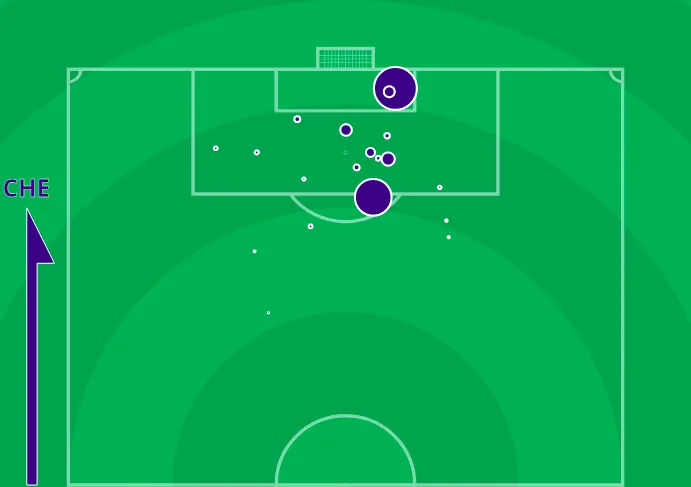
As their shot map indicates, Chelsea did have a couple of big chances, but only three attempts bore an xG value greater than 0.15, meaning that their overall xG of 2.08 was easily bloated due to the volume of shots they took.
Conclusion
Although Arsenal certainly deserve a lot of credit for a smart game plan and excellent execution of it, this victory was probably just a one-off.
Chelsea could easily have taken one of their many chances, as the woodwork was called into action for Arsenal too. The Blues were in absolute control of the match, but their solitary mistake cost them the three points.
Arteta’s switch to a 3-4-2-1 obviously worked, but on this evidence, it was probably done for this game specifically rather than as a long-term system for the Gunners.
Given their overall defensive woes this season, such a solid performance at the back must come as a manager positive, but at the expense of a blunt front line, it shows that Arsenal are still far away from finding the right balance.
Either way, though, this win will give them a much-needed boost for their Conference League hopes, while Chelsea are reminded that the top-four race is still alive just before their FA Cup final clash.
Stats courtesy WhoScored and Infogol.
Add Sportslens to your Google News Feed!
